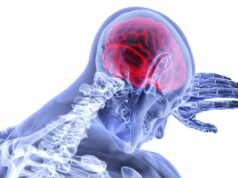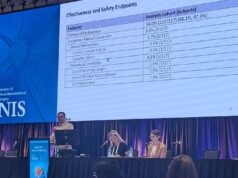Common infections in children pose a high risk of ischaemic stroke, according to research presented at the American Stroke Association’s International Stroke Conference 2012.
In a review of 2.5 million children, Heather Fullerton, the study’s principal investigator and director of the Pediatric Stroke and Cerebrovascular Disease Center at the University of California, San Francisco, USA and colleagues identified 126 childhood ischaemic stroke cases and then randomly selected 378 age-matched controls from the remaining children without stroke. They discovered that 29% of those who suffered a stroke had a medical encounter for infection in the two days preceding the stroke versus 1% of controls during the same dates.
In the three- to seven-day window, 13% of children had an infection compared to 2% of controls.
The elevated risk of stroke did not persist after the first month of infection, researchers said.
“This is the first large study to establish the relationship between infection and stroke in children,” said Fullerton.
Researchers analysed diagnostic and radiologic databases of children enrolled in the Kaiser Permanente healthcare plan from 1993 to 2007. They evaluated medical records and chart reviews for infections during the two years prior to the childhood stroke, and the same time period for the age-matched controls.
The children with stroke ranged from infants to adolescents, average 10.5 years old (oldest child was 19). Researchers identified three stroke-free controls per case. Findings between girls and boys or ethnic groups did not differ.
Researchers found acute infections are more important in triggering stroke than chronic infections over time.
“These were predominantly minor acute infections and represented a variety of infections, including upper respiratory infections, urinary tract infections and ear infections,” Fullerton said. “No particular type of infection predominated.”
The study findings hold implications for the secondary prevention of stroke in children, she said.
Most previously healthy children with an ischaemic stroke have a disease of the blood vessels to the brain, and these children are at highest risk of recurrent stroke. This study may provide some insight into why children develop this arteriopathy: the inflammatory process that results from an infection which may lead to stroke by causing vascular injury, researchers said.
The standard treatment for ischaemic stroke in children is blood thinners. But the study suggests that future research should focus on the potential role for anti-inflammatory medications in preventing the recurrence of stroke in this population.
The incidence of stroke in childhood is about five per 100,000 in the United States each year, Fullerton said.
About half of childhood strokes are haemorrhagic, according to American Heart Association statistics.
“Childhood infections are exceedingly common, while childhood strokes are uncommon,” Fullerton said. “Parents should not be alarmed at the findings of this study. We suspect that there are rare genetic factors that may place some children at risk for this uncommon effect of common infections.”
Infection is an established risk factor for ischaemic stroke in adults.
Co-authors are: Nancy K Hills, Claiborne Johnston, and Stephen Sidney.
The National Institute of Neurological Disorders and Stroke funded the study.









